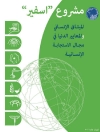Taking South Asia as its focus, this wide-ranging collection probes the general reluctance of the cultural anthropology to engage with contemporary visual art and artists, including painting, sculpture, performance art and installation. Through case studies engaged equally in anthropology and visual studies, contributors examine art and artistic production in India, Sri Lanka, Pakistan, Bangladesh, and Nepal to bring the social and political complexities of artistic practice to the fore. Demonstrating the potential of the visual as a means to understand a society, its values, and its politics, this volume ranges across discourses of anthropology, sociology, biography, memory, art history, and contemporary practices of visual art. Ultimately, Intersections of Contemporary Art, Anthropology and Art History in South Asia simultaneously expands and challenges the disciplinary foci of two fields: it demonstrates to art criticism and art history the necessity of anthropological and sociological methodologies and theories, while at the same time challenging the “iconophobia” of social sciences.
Inhoudsopgave
Chapter 1. Intersections and Implications: When Anthropology, Art Practice and Art History Converge; Sasanka Perera & Dev Nath Pathak.- Section One. Contours of Quest: Arts at Crossroad.- Chapter 2. Mimicking Anthropologists: Re-Membering a Photo Archive via Pata Paintings, Performative Mimesis and Photo-Performance; Parul Dave Mukherji.- Chapter 3. Reframing Contexts for Pakistani Contemporary Art; Salima Hashmi & Farida Batool.- Chapter 4. The ‘Art’ of Ethnography: Feminist Ethnography & Women Artists in South Asia; Pooja Kalita.- Section Two. Political & Aesthetic: Explorations of Intersections.- Chapter 5. Globalization and Local Anxieties in the Art of Bangladesh: The Interface of History and the Contemporary; Lala Rukh Selim.- Chapter 6. Between Anthropology and History: The Entangled Lives of Jangarh Singh Shyam and Jagdish Swaminathan; Sandip K. Luis.- Chapter 7. Towards Blurring the Boundaries in Anthropology: Reading Jamini Roy Today; Jyoti.- Chapter 8.Imposed, Interrupted and Other Identities: Rupture as Opportunity in the Art History of Pakistan; Niilofur Farrukh.- Section Three. Art for Public: Individual, Institutions and Issues.- Chapter 9. Transcending and Subverting Boundaries: Understanding the Dynamics of Street Art Scene in Nepal; Binit Gurung.- Chapter 10. Ruptures of Rasheed Araeen in the Politics of Visual Art: Towards a New Art Discourse in Pakistan; Amra Ali.- Chapter 11. Collectivism in Cotemporary Sri Lankan Art: The History of an Usual Case of Artists; Anoli Perera.
Over de auteur
Sasanka Perera is Professor of Sociology at South Asian University, New Delhi, India. He is the author of, among other publications, Artists Remember; Artists Narrate: Memory and Representation inn Contemporary Sri Lankan Visual Arts (2011), Violence and The Burden of Memory: Remembrance and Erasure in Sinhala Consciousness (2015) and Warzone Tourism in Sri Lanka: Tales from Darker Places in Paradise (2016).
Dev Nath Pathak is Assistant Professor of Sociology at South Asian University, New Delhi, India. He is the author of Living and Dying: Meanings in Maithili Folklore (2018), the editor of Another South Asia! (2017), the co-editor, with Sasanka Perera, of Culture and Politics in South Asia: Performative Communication (2017) and he also co-edited, with Ravi Kumar and Sasanka Perera, Sociology and Social Anthropology in South Asia: Histories and Practices (2018).












